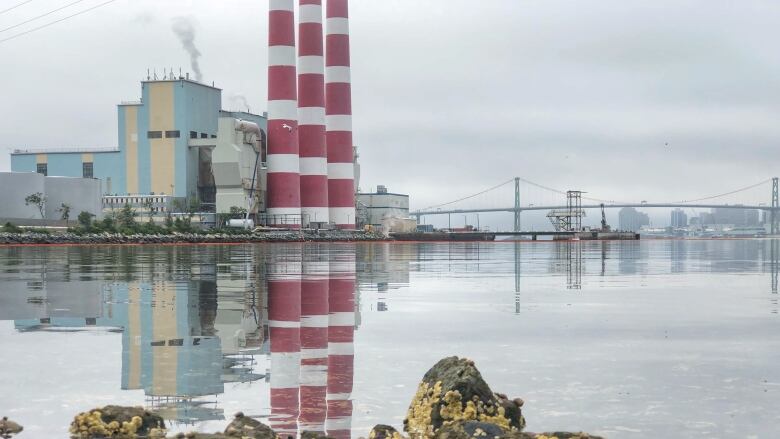Nova Scotia Power gets 46 per cent of province's cap-and-trade credits
Regulations set emission credit limits, give environment minister power to block trades

Nova Scotia's biggest polluter, Nova Scotia Power, will get almost half the credits available to companies participating in the cap-and-trade program the province is setting up and which will begin in January.
The goal of the program is to force polluters to reduce their greenhouse-gas emissions bydecreasing the number of credits in years to come. Companies will either have to lower their emissions or buy creditsif they can't meet their targets.
To begin with, theprovince announced Wednesday,13,683,000 emission credits will be mostly available free of charge in 2019. Nova Scotia Power will receive 6,334,000, or 46 per cent them.
Most of the rest will be divvied up between almost two dozen other companies whose emissions are bad enough to warrant their inclusion in the greenhouse-gas reduction program. In addition to Nova Scotia Power, they include the Lafarge Canada cement plant in Brookfield, IrvingOil and other gasoline importers, companies that produce or import furnace oil,as well as natural gas distributors.
The market
The Nova Scotia government estimatesthose free credits equate to about 90 per cent of Nova Scotia Power's needs. It means the utility will have to reduce emissionsandbuy additional credits throughgovernment auctions. The province has set a $20 per credit floor price.
Fuel suppliers will receive for freeabout 80 per cent of what they will need.
The Ecology Action Centre on Wednesday welcomed some aspects of the plan, including putting money raised at credit auctions into a new Nova Scotia Green Fund that could generate between $25 million and $30 million a year for "low-carbon programming."
But the Halifax-based group also criticized the province's emissions reduction targets from cap-and-trade, saying they aren't strong enough in the face climate change.
Smaller market
Unlike other jurisdictions, the credits generated in Nova Scotia can only be traded within the province, which is why the government is restricting how they can be exchangedandsetting limits on how many can be traded. All told, the regulations published Wednesday run 47 pages.
Jason Hollett, the executive director of climate change with theDepartment of Environment, said those rules were needed because of Nova Scotia's unique system.
"It's important primarily because we understand that the market in Nova Scotia is a lot smaller than what you would see in other cap-and-trade markets," he said. "So the limitations that are placed on purchasingand the regulations are meant to ensure that there are enough greenhouse-gas allowancesfor all participants in the province."
Credits will decrease
The number of available credits will decrease by roughly one per centover each of the four years of the program. Companies will be expected to lower their emissions year over year, but thosethat don't meet theirtargets will be expected to buy credits from those that do as compensation.
Those trades happen through private transactions between program participants or confidentially through a Nova Scotia government auction. According to the regulations posted Wednesday, there will be a minimum of two auctions a year, starting in 2020.
The Nova Scotia government has previously said it expects consumers to pay about a penny more a litre for gasoline and heating oil, and about the same amount per cubic metre of natural gas. There's also apotential increase of about one percent on Nova Scotia Power bills starting next year.
There are no restrictions on credit trades between companies, but Nova ScotiaEnvironment Minister Margaret Miller does have the power to limit trades, cancel deals and block companies from participating in auctions if he feels those companies are not playing by the rules or are trying to manipulate the price of credits.
The province has set a $20 per credit floor price, but has set aside a percentage of credits in a strategic reserve that can be made available, as a last resort, to companies that need credits but can't find a company willing or able to trade. Those credits will cost $50each.












_(720p).jpg)


 OFFICIAL HD MUSIC VIDEO.jpg)
.jpg)



























































































